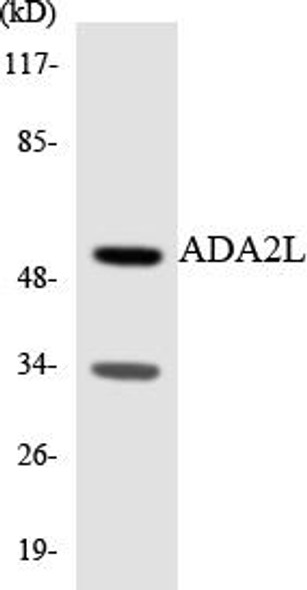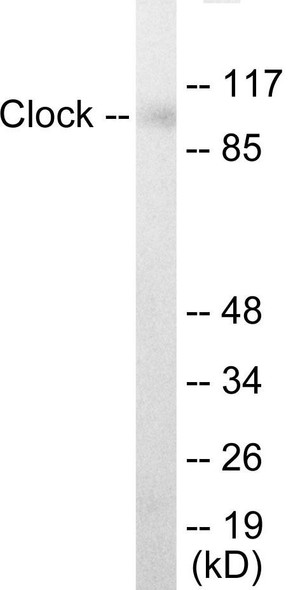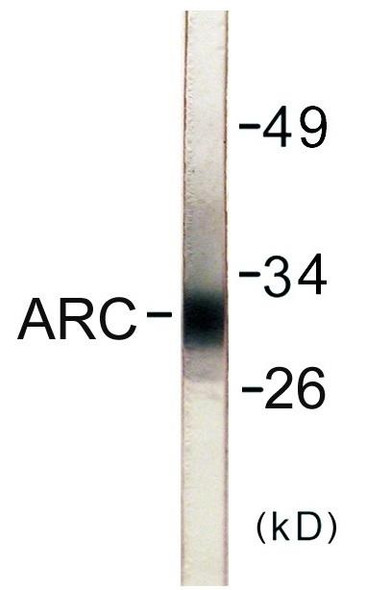Description
Glucokinase Regulator Colorimetric Cell-Based ELISA
The Glucokinase Regulator Colorimetric Cell-Based ELISA Kit is a powerful tool for studying the regulation of glucokinase activity in cells. This kit allows for the detection of glucokinase levels in a high-throughput and sensitive manner, making it ideal for research in diabetes, metabolic disorders, and drug discovery.Glucokinase is a key enzyme involved in glucose metabolism, playing a crucial role in regulating blood sugar levels in the body. Dysregulation of glucokinase activity has been linked to various metabolic disorders, making it a valuable target for therapeutic interventions.
With its high sensitivity and specificity, the Glucokinase Regulator Colorimetric Cell-Based ELISA Kit offers accurate and reliable results, allowing researchers to investigate the mechanisms of glucokinase regulation and develop novel approaches for treating metabolic diseases. Order now to advance your research in glucose metabolism and therapeutic development.
| Product Name: | Glucokinase Regulator Colorimetric Cell-Based ELISA |
| Product Code: | CBCAB01096 |
| ELISA Type: | Cell-Based |
| Target: | Glucokinase Regulator |
| Reactivity: | Human, Mouse, Rat |
| Dynamic Range: | > 5000 Cells |
| Detection Method: | Colorimetric 450 nmStorage/Stability:4°C/6 Months |
| Format: | 96-Well Microplate |
The Glucokinase Regulator Colorimetric Cell-Based ELISA Kit is a convenient, lysate-free, high throughput and sensitive assay kit that can detect Glucokinase Regulator protein expression profile in cells. The kit can be used for measuring the relative amounts of Glucokinase Regulator in cultured cells as well as screening for the effects that various treatments, inhibitors (ie siRNA or chemicals), or activators have on Glucokinase Regulator.
Qualitative determination of Glucokinase Regulator concentration is achieved by an indirect ELISA format. In essence, Glucokinase Regulator is captured by Glucokinase Regulator-specific primary antibodies while the HRP-conjugated secondary antibodies bind the Fc region of the primary antibody. Through this binding, the HRP enzyme conjugated to the secondary antibody can catalyze a colorimetric reaction upon substrate addition. Due to the qualitative nature of the Cell-Based ELISA, multiple normalization methods are needed:
| 1. | A monoclonal antibody specific for human GAPDH is included to serve as an internal positive control in normalizing the target absorbance values. |
| 2. | Following the colorimetric measurement of HRP activity via substrate addition, the Crystal Violet whole-cell staining method may be used to determine cell density. After staining, the results can be analysed by normalizing the absorbance values to cell amounts, by which the plating difference can be adjusted. |
| Database Information: | Gene ID: 2646, UniProt ID: Q14397, OMIM: 600842, Unigene: Hs.89771 |
| Gene Symbol: | GCKR |
| Sub Type: | None |
| UniProt Protein Function: | GCKR: a key regulator of glucokinase in the liver and pancreas. Not detected in muscle, brain, heart, thymus, intestine, uterus, adipose tissue, kidney, adrenal, lung or spleen. When expressed alone, both glucokinase and GCKR localize predominantly to the cytoplasm. Co-expression induces both proteins to localize in the nucleus. |
| UniProt Protein Details: | Protein type:Inhibitor Chromosomal Location of Human Ortholog: 2p23 Cellular Component: cytoplasm; cytosol; nucleoplasm Molecular Function:protein binding Biological Process: negative regulation of glucokinase activity; protein import into nucleus, translocation; response to fructose stimulus; urate metabolic process Disease: Fasting Plasma Glucose Level Quantitative Trait Locus 5 |
| NCBI Summary: | This gene encodes a protein belonging to the GCKR subfamily of the SIS (Sugar ISomerase) family of proteins. The gene product is a regulatory protein that inhibits glucokinase in liver and pancreatic islet cells by binding non-covalently to form an inactive complex with the enzyme. This gene is considered a susceptibility gene candidate for a form of maturity-onset diabetes of the young (MODY). [provided by RefSeq, Jul 2008] |
| UniProt Code: | Q14397 |
| NCBI GenInfo Identifier: | 327478611 |
| NCBI Gene ID: | 2646 |
| NCBI Accession: | Q14397.6 |
| UniProt Secondary Accession: | Q14397,Q53RY6, Q99522, A1L4C2, B4DPQ2, |
| UniProt Related Accession: | Q14397 |
| Molecular Weight: | 16,477 Da |
| NCBI Full Name: | Glucokinase regulatory protein |
| NCBI Synonym Full Names: | glucokinase (hexokinase 4) regulator |
| NCBI Official Symbol: | GCKR |
| NCBI Official Synonym Symbols: | GKRP; FGQTL5 |
| NCBI Protein Information: | glucokinase regulatory protein |
| UniProt Protein Name: | Glucokinase regulatory protein |
| Protein Family: | Glucokinase regulatory protein |
| UniProt Gene Name: | GCKR |
| UniProt Entry Name: | GCKR_HUMAN |
| Component | Quantity |
| 96-Well Cell Culture Clear-Bottom Microplate | 2 plates |
| 10X TBS | 24 mL |
| Quenching Buffer | 24 mL |
| Blocking Buffer | 50 mL |
| 15X Wash Buffer | 50 mL |
| Primary Antibody Diluent | 12 mL |
| 100x Anti-Phospho Target Antibody | 60 µL |
| 100x Anti-Target Antibody | 60 µL |
| Anti-GAPDH Antibody | 60 µL |
| HRP-Conjugated Anti-Rabbit IgG Antibody | 12 mL |
| HRP-Conjugated Anti-Mouse IgG Antibody | 12 mL |
| SDS Solution | 12 mL |
| Stop Solution | 24 mL |
| Ready-to-Use Substrate | 12 mL |
| Crystal Violet Solution | 12 mL |
| Adhesive Plate Seals | 2 seals |
The following materials and/or equipment are NOT provided in this kit but are necessary to successfully conduct the experiment:
- Microplate reader able to measure absorbance at 450 nm and/or 595 nm for Crystal Violet Cell Staining (Optional)
- Micropipettes with capability of measuring volumes ranging from 1 µL to 1 ml
- 37% formaldehyde (Sigma Cat# F-8775) or formaldehyde from other sources
- Squirt bottle, manifold dispenser, multichannel pipette reservoir or automated microplate washer
- Graph paper or computer software capable of generating or displaying logarithmic functions
- Absorbent papers or vacuum aspirator
- Test tubes or microfuge tubes capable of storing ≥1 ml
- Poly-L-Lysine (Sigma Cat# P4832 for suspension cells)
- Orbital shaker (optional)
- Deionized or sterile water
*Note: Protocols are specific to each batch/lot. For the correct instructions please follow the protocol included in your kit.
| Step | Procedure |
| 1. | Seed 200 µL of 20,000 adherent cells in culture medium in each well of a 96-well plate. The plates included in the kit are sterile and treated for cell culture. For suspension cells and loosely attached cells, coat the plates with 100 µL of 10 µg/ml Poly-L-Lysine (not included) to each well of a 96-well plate for 30 minutes at 37°C prior to adding cells. |
| 2. | Incubate the cells for overnight at 37°C, 5% CO2. |
| 3. | Treat the cells as desired. |
| 4. | Remove the cell culture medium and rinse with 200 µL of 1x TBS, twice. |
| 5. | Fix the cells by incubating with 100 µL of Fixing Solution for 20 minutes at room temperature. The 4% formaldehyde is used for adherent cells and 8% formaldehyde is used for suspension cells and loosely attached cells. |
| 6. | Remove the Fixing Solution and wash the plate 3 times with 200 µL 1x Wash Buffer for five minutes each time with gentle shaking on the orbital shaker. The plate can be stored at 4°C for a week. |
| 7. | Add 100 µL of Quenching Buffer and incubate for 20 minutes at room temperature. |
| 8. | Wash the plate 3 times with 1x Wash Buffer for 5 minutes each time. |
| 9. | Add 200 µL of Blocking Buffer and incubate for 1 hour at room temperature. |
| 10. | Wash 3 times with 200 µL of 1x Wash Buffer for 5 minutes each time. |
| 11. | Add 50 µL of 1x primary antibodies (Anti-Glucokinase Regulator Antibody and/or Anti-GAPDH Antibody) to the corresponding wells, cover with Parafilm and incubate for 16 hours (overnight) at 4°C. If the target expression is known to be high, incubate for 2 hours at room temperature. |
| 12. | Wash 3 times with 200 µL of 1x Wash Buffer for 5 minutes each time. |
| 13. | Add 50 µL of 1x secondary antibodies (HRP-Conjugated AntiRabbit IgG Antibody or HRP-Conjugated Anti-Mouse IgG Antibody) to corresponding wells and incubate for 1.5 hours at room temperature. |
| 14. | Wash 3 times with 200 µL of 1x Wash Buffer for 5 minutes each time. |
| 15. | Add 50 µL of Ready-to-Use Substrate to each well and incubate for 30 minutes at room temperature in the dark. |
| 16. | Add 50 µL of Stop Solution to each well and read OD at 450 nm immediately using the microplate reader. |
(Additional Crystal Violet staining may be performed if desired – details of this may be found in the kit technical manual.)






